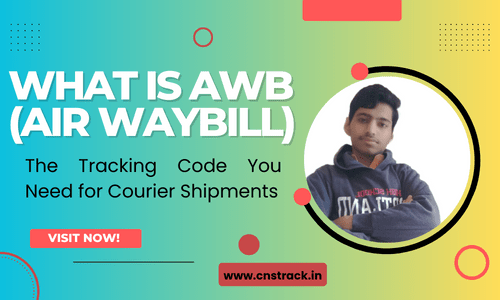What is AWB: In today’s fast-paced world of global commerce, the efficient and reliable movement of goods is a cornerstone of success for businesses and individuals alike. Whether you’re sending a vital document, a precious package, or a bulk cargo shipment, the journey from sender to recipient can often feel like a mystery, fraught with uncertainties. Enter the Air Waybill (AWB) numbers, the unsung heroes of courier services.
When it comes to international air shipping, the Air Waybill (AWB) is the unsung hero of the logistics world. This essential document ensures the seamless transportation of goods across the globe. In this blog post, we’ll delve into the nitty-gritty of what an Air Waybill is, how it works, and the key information you need to know about this vital component of international cargo shipping.
What is an Air Waybill (AWB)?
An Air Waybill, often abbreviated as AWB, is a critical document accompanying goods shipped via international air courier services. It serves multiple functions, acting as both a receipt of goods and a contract of carriage between the shipper (sender) and the carrier (airline). This document ensures the smooth and secure movement of cargo while providing a legal framework that can be enforced by law.
Key Components of an Air Waybill
Understanding the contents of an AWB is essential. Here are the key components typically found in an Air Waybill:
- Shipper and Recipient Information: The AWB contains the names and addresses of both the shipper (sender) and the recipient (consignee). This information is crucial for identifying the parties involved in the shipment.
- Origin and Destination: Three-letter airport codes for the origin and destination airports are included, providing clear instructions about where the cargo is coming from and where it’s headed.
- Cargo Details: An AWB specifies the number of pieces, the gross weight of the cargo, and a description of the goods being shipped. This information helps ensure accurate handling and tracking of the cargo.
- Declared Shipment Value: For customs purposes, the AWB includes the declared value of the contents being shipped. This is important for assessing duties and taxes.
- Special Instructions: If there are any special handling instructions for the cargo, such as requirements for perishable items, they will be noted in the AWB.
- Contractual Terms: The AWB outlines the terms and conditions of the contract between the shipper and the carrier. This includes liability limits, claims procedures, and applicable charges.
AWB vs. Bill of Lading
It’s important to note that AWBs are different from bills of lading, which are typically used in maritime shipping. Unlike bills of lading, AWBs are non-negotiable instruments. This means that an AWB does not specify the flight or arrival time of the cargo. While bills of lading serve as both a receipt of shipment and a contract, AWBs are primarily contracts for transportation and do not cover the value of the merchandise.
Related Post: What Is Transit Insurance: A Comprehensive Guide for Transport Businesses
How to Obtain an Air Waybill
To obtain an AWB, follow these general steps:
- Contact the Airline or Freight Forwarder: Get in touch with the airline responsible for transporting your cargo or work with a reputable freight forwarder.
- Provide Shipment Details: Offer detailed information about your shipment, including origin, destination, cargo description, weight, and packaging.
- Complete the AWB Form: Fill out the AWB form provided by the airline or freight forwarder with accurate and complete information.
- Review and Sign: Carefully review the terms and conditions in the AWB, ensuring you understand and agree to them. Sign the AWB to acknowledge your acceptance.
- Receive Your AWB: The airline or freight forwarder will issue an official AWB document, which includes a unique AWB number. You’ll receive one copy, while others will be retained by the airline and the consignee.
Where to Get an Air Waybill
The International Air Transport Association (IATA) designs and distributes standard AWBs. You can access AWB forms through airlines, freight forwarders, or online sources. In recent years, electronic AWBs (e-AWBs) have become prevalent, replacing traditional paper forms. Most major carriers, including FedEx and UPS, offer electronic AWB options for convenience.
Bottom Line
An Air Waybill (AWB) is the backbone of international air cargo shipping, ensuring that goods reach their destinations efficiently and safely. This non-negotiable document outlines the terms of transportation, specifies cargo details, and serves as a legal contract enforceable by law. Whether you’re a seasoned logistics professional or a newcomer to the world of shipping, understanding the AWB and its significance is essential for successful international cargo transportation.
